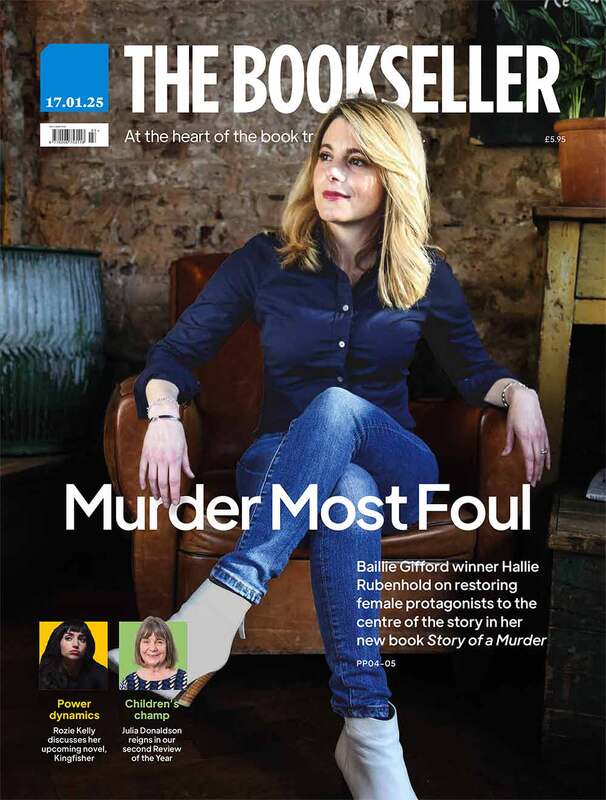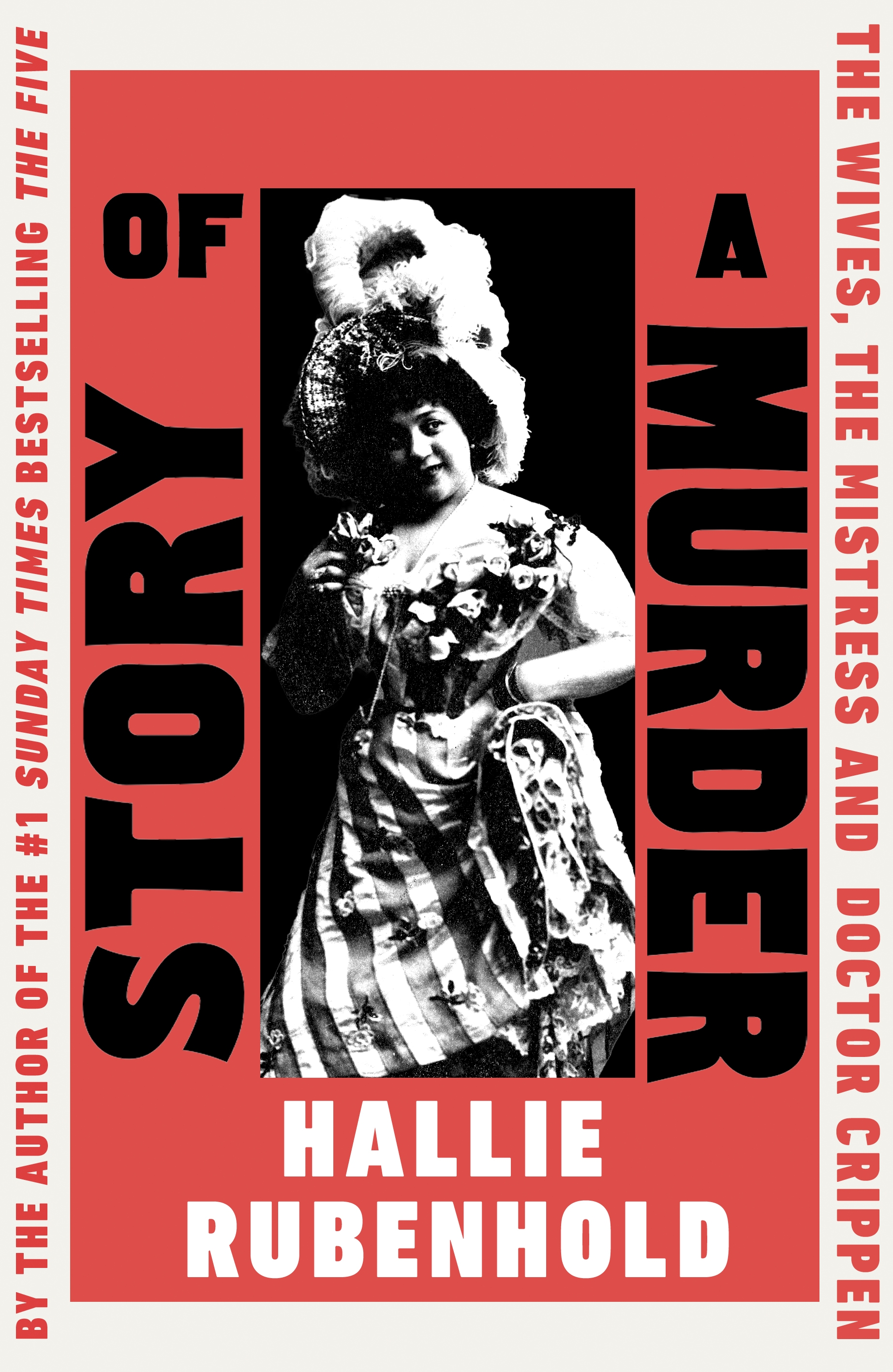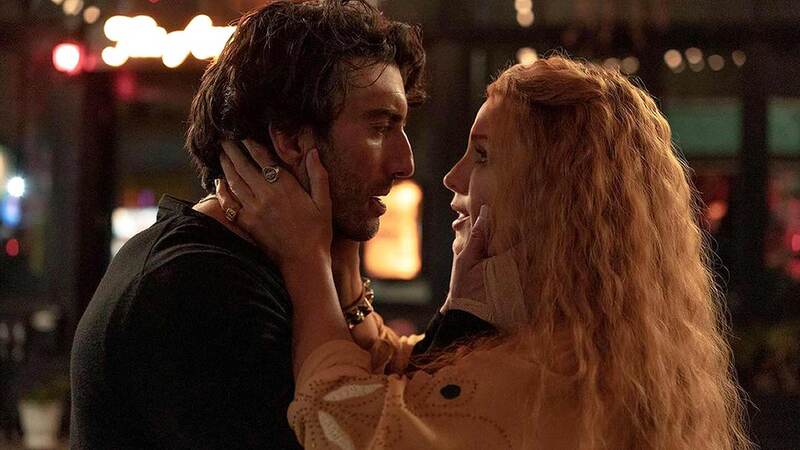You are viewing your 1 free article this month. Login to read more articles.
Hallie Rubenhold follows her Baillie Gifford win with another book about a notorious murderer, centred on its female protagonists
 Caroline Sanderson
Caroline SandersonCaroline Sanderson is a non-fiction writer, editor and books journalist. Her books include a travel narrative, A Rambling Fancy: in the F ...more
Rubenhold follows The Five with another book about a notorious killer, once again restoring its female protagonists to the centre of the story.

Caroline Sanderson is a non-fiction writer, editor and books journalist. Her books include a travel narrative, A Rambling Fancy: in the F ...more
“There are so many women in this story. But the case has long been appropriated by the men involved – the police, the barristers – who have portrayed themselves as the heroes who vanquished the villain. So I thought: Let’s just quiet down this ‘I’m a hero’ noise and let the women talk.”
Author and social historian Hallie Rubenhold is explaining why she chose the 1910 murder perpetrated by the notorious Dr Crippen for the subject of her new book. “A lot of what I read about the case made me think: this is bullshit. That’s the starting point for all of my books – something that prompts me to go: ‘I’ve got to see what else is here.’”
Like its brilliant predecessor, The Five, her 2019 Baillie Gifford Prize-winning rehabilitation of the five female victims of Jack the Ripper, Story of a Murder: The Wives, the Mistress and Doctor Crippen tackles another gruesome murder case in which the perpetrator’s fame has unjustly outstripped that of his victim. The book’s first line reads: “No murderer should ever be the guardian of their victim’s story, and yet this is the role that Hawley Harvey Crippen has always held.”
In early February 1910, music hall performer Belle Elmore vanished from her north London home. Her disappearance alarmed her circle of friends in the Music Hall Ladies’ Guild, who demanded an investigation into her whereabouts. There followed a fevered manhunt for the prime suspect – her husband, medical quack and fraudster, Dr Crippen, who fled with his lover, Ethel Le Neve, on a liner bound for the US. Famously, he was apprehended, thanks to Guglielmo Marconi’s newly-invented transatlantic telegraph.
In the 100 years since the murder, Crippen – who was later hanged for his crime – has inspired numerous books, including The Mild Murderer by Tom Cullen(1977), as well as a 1963 film starring Donald Pleasence which is typical in depicting Crippen as a downtrodden man, routinely humiliated by his shrewish and physically dominant wife.
For Rubenhold, criminal cases provide an effective way to “learn about a time period in a granular way. Ordinary people are interviewed en masse, so you get lots of different perspectives from voices you don’t normally hear.’’ Also, the way crimes are reported is always very much in the idiom of the time with all its prejudices and preconceived notions.
Murder stories are starting to become more victim-centric and much broader in the telling. Because any murder story is a panoramic one
While this authenticity is of historical value, there is also the rub, explains Rubenhold. “All of those prejudices and preconceptions jump straight into newspaper reports of the time with no filter, and then often into popular culture as well. So we end up parroting those same prejudices even though we now deem them wholly unacceptable. For example, the idea that ‘the victim was a horribly slutty woman so she deserved to die, didn’t she?’’’
Drawing on a wealth of research, Rubenhold probes the mysterious, glossed-over death of Crippen’s first wife, Charlotte. She also gives a much more prominent place in the story to Ethel Le Neve, inviting us to ponder whether she was merely an innocent girl, in thrall to an older man as has routinely been assumed, or an active accessory to murder.
The previously largely ignored Le Neve is one of the book’s most compelling characters. “I’m haunted by her. I think she was a psychopath,” Rubenhold explains. “Her and Crippen together – the power balance was perfect. I think she pretended to be a wilting violet and she wasn’t at all.”
And then, most crucially, Rubenhold restores Belle Elmore to her rightful place at the centre of the story, liberating her from her traditional casting as “a classic victim of victim blaming”. For decades defamed as an extravagant and domineering woman – a “peacock and a slut” – in Story of a Murder she is a spirited and progressive woman who lived her truth before being brutally murdered.
The case of Hawley Harvey Crippen was also irresistible to Rubenhold because his, like her own, is a transatlantic story. Crippen was American-born and later came to live and work in London, just as Los Angeles-born Rubenhold, whose father is British, has. I am fascinated now to learn that Rubenhold – just like the women she restores to life in The Five – has East End roots through her Whitechapel-born grandfather. “Growing up I remember my Cockney grandparents and other relatives doing dances like the Lambeth Walk and singing music hall songs. So I always had a real interest in British history, and I knew from a young age that I would want to study it in some way.”
But the transatlantic nature of Dr Crippen’s complex story also posed a huge challenge, as Rubenhold began her research for the book just prior to the Covid-19 pandemic: “I signed the contract to write this book at the end of 2019, but my initial research plan was delayed because I won the Baillie Gifford. Not a bad thing, of course, but it took over for a while. I then booked my flights for April 2020, ready to dig into the American side of the story.
“And then everything shut down. Everyone talks about the novels that got rattled off during lockdown, but for most non-fiction writers who depend on resources it was a nightmare. I had to tear up my original research plan and write the book in a much more ad hoc way.” Rubenhold also found herself slightly paralysed by the stellar success of The Five. “You look at the blank page and think: ‘How the hell am I going to top that?’ Or you reconcile yourself to the fact that you’re not going to.”
Actually, Story of a Murder is another triumph. Even the Ronseal title has clever intent in it. Comments Rubenhold: “In a lot of true crime there’s still this massive focus on ‘let’s catch the killer!’ But it’s very interesting to see how murder stories are starting to become more victim-centric and much broader in the telling. Because any murder story is a panoramic one. My book looks at all the people whose lives were touched by Belle’s murder, as well as the legal process that followed it. All of that is totally relevant to today.”
Indeed it is, as encapsulated by this resonant line from the book: “Murder is never a single act of destruction, but experienced as a series of interconnected injuries, a spray of shrapnel scattered through the lives of anyone in close proximity.”









